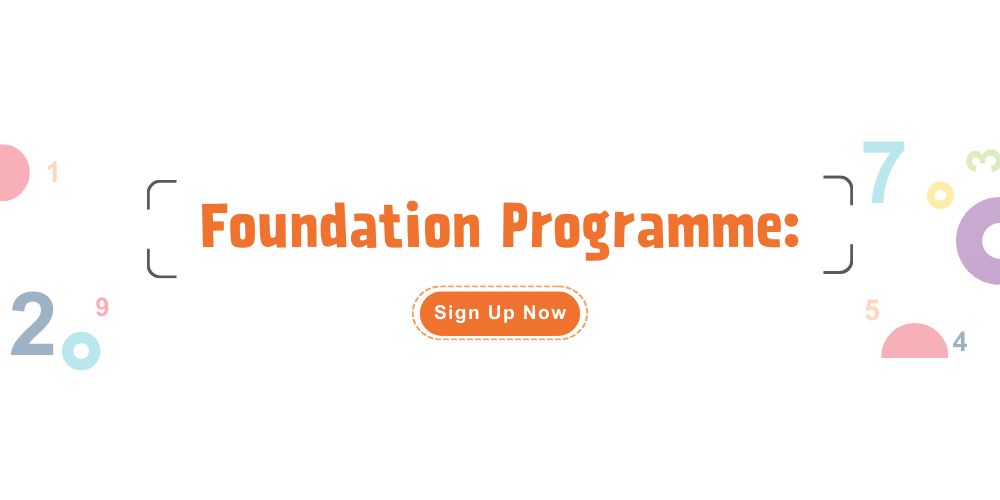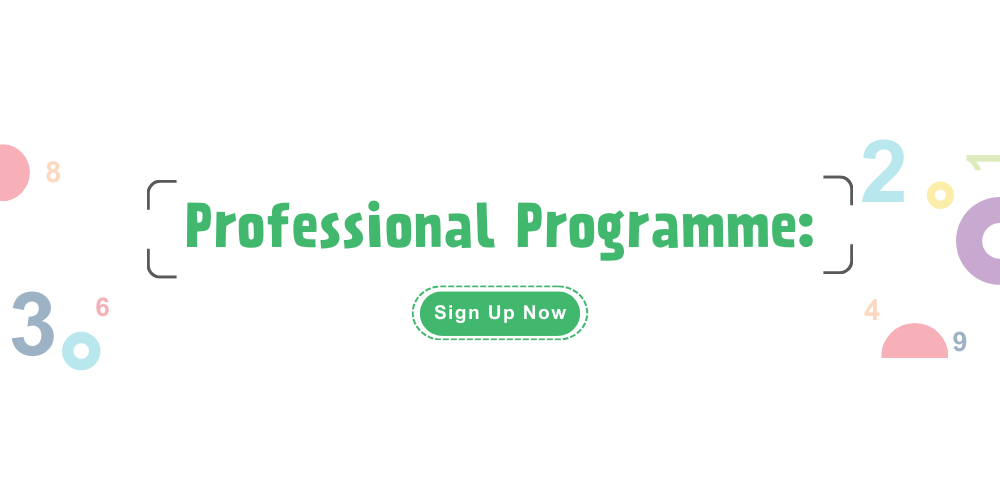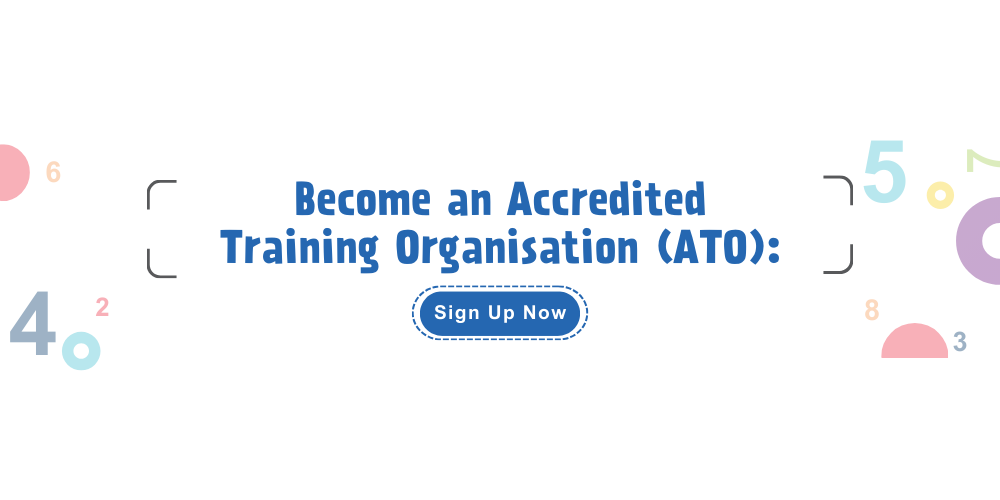Artificial Intelligence and Work: Two Perspectives
By Steven M. Miller and Thomas H. Davenport
One of the most important issues in contemporary societies is the impact of intelligent technologies on human work. For an empirical perspective on the issue, we recently completed 30 case studies of people collaborating with AI-enabled smart machines.1 Twenty-four were from North America, mostly in the US. Six were from Southeast Asia, mostly in Singapore. We compare some of our observations to one of the broadest academic examinations of the issue. In particular, we focus on our case study observations with regard to key findings from the MIT Task Force on the Work of the Future report.
MIT established its Work of the Future Task Force in 2018 as an "institute-wide initiative to understand how emerging technologies are changing the nature of human work and the skills required—and how we can design and leverage technological innovations for the benefit of everyone in society."2 The task force focused on understanding the current and forthcoming impacts of advanced automation—in particular, artificial intelligence and robotics—on the nature of work, on productivity and jobs, and on labor markets and employment trends. While the MIT task force mostly focused on the situation in the US, their field studies also included visits to German factories, and they extensively reviewed research studies on the workforce and employment impacts of automation—with emphasis on impacts of AI and robotics—from all over the world. They published their final report in November 2020.3
We address three major conclusions extracted from the MIT task force final report with our case study observations. In the first two areas, the MIT conclusions are entirely consistent with what we found. In the third area we observed some differences between the MIT study and our findings. We conclude with an issue that we did not address in our research, but which is important for business and governmental leaders to address. Quotations colored in blue are directly extracted from MIT Work of the Future task force reports.
Technology Is Not Replacing Human Labor Anytime Soon
The first of these addresses whether technology will replace human labor:
Technological change is simultaneously replacing existing work and creating new work. It is not eliminating work altogether.
No compelling historical or contemporary evidence suggests that technological advances are driving us toward a jobless future. On the contrary, we anticipate that in the next two decades, industrialized countries will have more job openings than workers to fill them, and that robotics and automation will play an increasingly crucial role in closing these gaps.
The MIT report acknowledges that intelligent machines thus far are capable of completing particular tasks, and not of performing entire business processes or even jobs. This reduces the likelihood that large-scale automation of human labor will take place. Indeed, in our case studies, almost all of the organizations involved said that AI and robotics had freed up workers to perform more complex tasks, but human workers had not lost jobs in significant numbers. Many of the companies we profiled were growing (in part because of their effective use of digital and AI technologies), so they needed all their human workers to keep up with growth. It is notable that the MIT task force predicts that over the next two decades, industrialized countries will have more job openings than workers to fill them, even with increasing workplace usage of AI and robotics and other types of technologies. In fact, in their 2019 Task Force report, they stated, "Contrary to the conventional narrative in which automation renders jobs increasingly scarce, we anticipate that, due to slowing labor force growth rates, rising ratios of retirees to workers, and increasingly restrictive immigration policies, over the next two decades industrialized countries will be grappling with more job openings than able-bodied adults to fill them."4
Recent work by the economists Daron Acemoglu and Pascual Restrepo provides evidence that, "Indeed, automation technologies have made much greater inroads in countries with more rapidly aging populations," and that "the adoption and development of these technologies are receiving a powerful boost from demographic changes throughout the world and especially from rapidly-aging countries such as Germany, Japan and South Korea."5 These findings are directly applicable to Singapore given its population demography.
In 11 of the world’s 12 largest economies, World Bank statistics indicate that fertility rates (births per woman) were well below replacement levels and the proportion of the population age 65 and over was on an increasing trajectory.6 The inevitable implication is that human labor will be in short supply. This is why the MIT task force report forecasts that neither the US nor the world at large is heading towards a future where there is not enough work for people to do as a result of greater usage of more sophisticated automation. More likely, in the decades to come, most of the world’s largest economies will make even greater usage of AI, robotics and other recent and pre-existing types of automation in order to keep their economic output from shrinking given their slowing or even declining labor force participation rates. The human labor that is available will be indispensable in making this transition.
Organizational Changes from AI Are Happening Gradually
The second conclusion sheds light on the confusing dichotomy between the rapid pace of AI technology development as viewed from R&D and tech start-up announcements and the much slower pace at which organizations are able to absorb and productively harness AI and robotic capabilities. It is described here:
Momentous impacts of technological change are unfolding gradually.
Spectacular advances in computing and communications, robotics, AI, and manufacturing processes are reshaping industries as diverse as insurance, retail, healthcare, manufacturing, and logistics and transportation. But we observe substantial time lags, often on the scale of decades, from the birth of an invention to its broad commercialization, assimilation into business processes, widespread adoption, and impacts on the workforce … Indeed, the most profound labor market effects of new technology that we found were less due to robotics and AI than to the continuing diffusion of decades-old (though much-improved) technologies of the Internet, mobile and cloud computing, and mobile phones. This timescale of change provides the opportunity to craft policies, develop skills, and foment investments to constructively shape the trajectory of change toward the greatest social and economic benefit.
Across our 30 case studies, we also observed that new AI-based systems, their supporting platform and infrastructure, and their surrounding work processes, do not materialise easily or quickly. It takes time for an organization to orchestrate the deep collaborations and complex deployment efforts across the ecosystem of job roles within the company that need to be involved, and also with key external partners (vendors, and sometimes customers).7
Indeed, new AI developments are proceeding at breakneck speed, but bringing everything together across technology, people, and job roles in any real-world work setting is a very complex, time intensive and iterative undertaking that extends over longer time periods.
The MIT task force elaborated on this slow adaptation process:
As this report documents, the labor market impacts of technologies like AI and robotics are taking years to unfold … in each instance where the Task Force focused its expertise on specific technologies, we found technological change — while visible and auguring vast potential — moving less rapidly, and displacing fewer jobs, than portrayed in popular accounts. New technologies themselves are often astounding, but it can take decades from the birth of an invention to its commercialization, assimilation into business processes, standardization, widespread adoption, and broader impacts on the workforce.8
The “Productivity J-Curve” phenomenon described by Professor Erik Brynjolfsson and his colleagues9 provides an explanation for why the observed rate of AI and robotics assimilation within a specific company is a slow and gradual process. In their research brief prepared for the MIT task force, they described the productivity J-curve phenomenon as follows:
… new technologies take time to diffuse, to be implemented, and to reach their full economic potential. For a transformative new technology like AI, it is not enough to simply “pave the cow paths” by making existing systems better. Instead, productivity growth from new technologies depends on the invention and implementation of myriad complementary investments and adjustments. The result can be a productivity J-curve, where productivity initially falls, but then recovers as the gains from these intangible investments are harvested.
Productivity growth is the most important single driver of higher living standards, and technological progress is the primary engine of productivity growth. Thus, it is troubling that despite impressive advances in AI and digital technologies, measured productivity growth has slowed since 2005.
While there are many reasons for this, the most important is that technological advances typically don’t translate into improvements in productivity unless and until complementary innovations are developed. These include many intangible assets such as new business processes, business models, skills, techniques, and organizational cultures. The need for myriad complementary innovations is substantial, especially in the case of fundamental technology advancements such as AI. Yet, these complementary innovations can take years or even decades to create and implement; in the meantime, measured productivity growth can fall below trends as real resources are devoted to investments in these innovations. Eventually, productivity growth not only returns to normal but even exceeds its previous rates. This pattern is called a Productivity J-Curve.
Major improvements in productive capacity require substantial up-front as well as ongoing investments, not only in the direct software and hardware aspects of the technology itself, but in all of the support efforts (the complements and adjustments) required to harness the new capabilities. Of course, there can be situations where a company can use a cloud-based AI application or other forms of packaged AI applications that do not require deep levels of integration with its existing technical infrastructure or processes. In such cases, the time span required to realize benefits could be short, and there may not be much or any productivity J-curve effect. But such situations would have an inherently smaller degree of impact on the company’s productive capabilities exactly because there is no deep integration with or improvements to existing infrastructure and processes.
Each of our 30 case examples was a snapshot at a particular point in time, always after the company had fully deployed and mostly or fully stabilized the system and had already started to realize tangible improvements in productive capacity. Most of the examples we studied were the result of multi-year efforts started years before the moment in time of our case example "snapshot." For example, while we were preparing our case study on AI-enabled financial transaction surveillance at DBS Bank, the company’s Chief Analytics Officer Sameer Gupta shared with us:
In my view, the reason this effort has been so successful is that it was not just been about analytics and AI. The team looked at how they run the entire function of transaction surveillance, transforming how they do this function end-to-end. This transformation has been supported, supplemented and augmented by analytics. But even with the best analytics models, had we not done all the other changes involved in this transformation, we would not have obtained the very impressive results that we ended up achieving. I see this as a successful business transformation that was augmented by analytics.
Sameer Gupta’s comment illustrates how AI system deployments require supporting implementation of many other types of business and organizational adjustments. In two of our case studies, large firms purchased a subsidiary to speed up their journey of capability development: MassMutual’s purchase of Haven Life for digital underwriting and Kroger’s purchase of 84.51o for data science capabilities. Despite acquiring entire organizational units with strong capabilities for creating and using the AI-based systems, the two large parent firms still had to go through a multi-year process to integrate both the technical capabilities as well as the "way of working" capabilities of these newly acquired subsidiaries into their overall ecosystems.
There is no escaping the reality that it takes substantial effort over an extended period of time for a company to make the necessary complimentary investments and adjustments—above and beyond the direct investments and efforts required—to assimilate these new technologies in ways that lead to substantial increases in productivity. Senior management in both the private and public sectors overseeing investments in AI and other advanced automation projects need to understand and anticipate the extended time periods required for an organization to make the necessary complementary investments, innovations and adjustments in order to go beyond just deploying the technology. They also need to anticipate that in terms of measuring economic returns over time, they will often see a productivity J-curve effect.
But it can be worth the effort. Our 30 case examples provide examples of productive capacity improvements either in terms of task or process output capacity, quality, or a combination of both.
The Shape of the Future Workforce
The MIT task force addressed not only the issue of whether and when human work will be replaced by technology, but also addressed important aspects of the future workforce. One conclusion in this area highlighted the necessity of cultivating and refreshing worker skills. They stated:
Fostering opportunity and economic mobility necessitates cultivating and refreshing worker skills.
Enabling workers to remain productive in a continuously evolving workplace requires empowering them with excellent skills programs at all stages of life: in primary and secondary schools, in vocational and college programs, and in ongoing adult training programs.
We also found that frontline workers, in order to collaborate effectively with smart machines in their work, needed new skills. However, in contrast to the MIT report, we did not find that those skills had been acquired through “excellent skills programs” sponsored by schools, colleges, and employers. Instead, most of the new skills were acquired on the job, or by employees who were personally motivated to acquire new skills on their own.
Leading higher education institutions have already started to adopt new AI-related skills programs, but there are still many education institutions that have not done so yet. While some progressive employers have internally implemented AI-related skills programs, many have not. As such, the majority of existing employees in most countries are largely on their own to develop these skills. The situation in Singapore is an exception due to the SkillsFuture national initiative to provide continuing education for the existing workforce, and also due to the AI Singapore educational outreach programs.
The MIT report also does not emphasize the importance of hybridized business and IT skills that we found in many of our case studies. In the context of these 30 case examples, organizations had to deepen their internal capabilities in IT and expand into related areas for digital transformation and data science/AI. Frontline system users had to learn how to work with the systems. Supervisors and frontline managers had to work through the process changes and learn how to manage in the new setting. Technology staff had to hybridize their skills in the direction of business and domain understanding. Business users had to hybridize in the direction of technology capabilities and digital thinking and savviness. In addition, people needed to move into new types of roles which spanned and integrated business and technology (for example, product management, data governance, ethical AI practices).
While both self-motivate learning and IT/business hybridization are not easy to accomplish, they are relatively straightforward to do successfully for those in the workforce with the highest levels of education (undergraduate degrees and post-graduate degrees), and in fact, the MIT task force report shows that in recent decades, at least in US labor markets, those in the workforce with highest levels of education have mostly done well.10
The MIT report emphasizes that augmentation is both a more desirable and more common outcome than large-scale automation. Augmentation is where employers create workplaces that combine smart machines with humans in close partnerships—symbiotically taking advantage of both human intelligence and machine intelligence. Most of our 30 case studies were examples of augmentation, and from what we observed, AI augmentation is largely quite successful. A few of our case studies involved some degree of full automation. Even for these few examples, there was still a need for augmentation in the sense that humans still have to supervise as well as support the continuous improvement of these fully automated tasks or processes, as well as handle special cases and disruptions.
The MIT task force effort included an imaginative and increasingly plausible view of how augmentation can be taken to even higher levels and expand into new types of applications. These ideas come from the task force research brief on "Artificial Intelligence and the Future of Work".11 The research brief authors Tom Malone, Daniela Rus and Robert Laubacher emphasize "thinking less about people OR computers and more about people AND computers." They elaborated as follows:
By focusing on human-computer groups—superminds—we can move away from thinking of AI as a tool for replacing humans by automating tasks, to thinking of AI as a tool for augmenting humans by collaborating with them more effectively. As we’ve just seen, AI systems are better than humans at some tasks such as crunching numbers, finding patterns, and remembering information. Humans are better than AI systems at tasks that require general intelligence—including non-routine reasoning and defining abstractions—and interpersonal and physical skills that machines haven’t yet mastered. By working together, AI systems and humans can augment and complement each other’s skills.
The possibilities here go far beyond what most people usually think of when they hear a phrase like "putting humans in the loop." Instead of AI technologies just being tools to augment individual humans, we believe that many of their most important uses will occur in the context of groups of humans. As the Internet has already demonstrated, another very important use of information technology—in addition to AI—will be providing hyperconnectivity: connecting people to other people, and often to computers, at much larger scales and in rich new ways that were never possible before.
That’s why we need to move from thinking about putting humans in the loop to putting computers in the group.
While we did not find an explicit objective to put computers in the group in the work settings we described, using technology to attain new levels of collective coordination and intelligence is not at all far-fetched. We already see this occurring to some extent in real-world situations in our Singapore LTA Smart City rail network management case study as well as in our Certis Jewel Changi Airport example (especially the smart operations center role). Both of these examples are in Singapore—an entire city-state economy and society making the future happen now. Over time, we expect to see more examples where smart-machine augmentation happens at the level of teams, departments, and entire business groups and organizations, and not just at the level of individual employees.
A Warning About Polarization of Labor Markets
Our research was case study-based, and did not address long-term economic and labor market issues. But the MIT Work of the Future task force analyzed US economy and labor market trends over prior decades up to the present, highlighting the stark realities of employment polarization and diverging job quality. They spotlighted the decline in the proportion of “middle-skill jobs” in the US labor market and the fact that wages for those in low-skilled occupations have stagnated for several decades. The task force explained the situation as follows12:
This ongoing process of machine substitution for routine human labor tends to increase the productivity of educated workers whose jobs rely on information, calculation, problem-solving, and communication — workers in medicine, marketing, design, and research, for example. It simultaneously displaces the middle-skill workers who in many cases provided these information-gathering, organizational, and calculation tasks. These include sales workers, office workers, administrative support workers, and assembly line production positions.
Ironically, digitalization has had the smallest impact on the tasks of workers in low-paid manual and service jobs, such as food service workers, cleaners, janitors, landscapers, security guards, home health aides, vehicle drivers, and numerous entertainment and recreation workers. Performing these jobs demands physical dexterity, visual recognition, face-to-face communications, and situational adaptability, which remain largely out of reach of current hardware and software but are readily accomplished by adults with modest levels of education. As middle-skill occupations have declined, manual and service occupations have become an increasingly central job category for those with high school or lower education. This polarization likely will not come to a halt any time soon.
The task force’s observation that US labor market employment polarization has been the status quo situation for over four decades now—and that it is more extreme in the US than in other advanced economies that have experienced positive productivity growth over past decades—led to their three additional conclusions:
Rising labor productivity has not translated into broad increases in incomes because labor market institutions and policies have fallen into disrepair.
Improving the quality of jobs requires innovation in labor market institutions.
Investing in innovation will drive new job creation, speed growth, and meet rising competitive challenges.
These three MIT task force conclusions address economywide issues that were beyond the scope of our more focused set of company-specific case studies. However, we feel these additional national policy oriented conclusions are important to highlight here for the following reasons. These conclusions, when combined with their other conclusions discussed above, set the stage for what is perhaps the strongest statement in their final report:13
Yet, if our research did not confirm the dystopian vision of robots ushering workers off of factory floors or artificial intelligence rendering superfluous human expertise and judgment, it did uncover something equally pernicious: Amidst a technological ecosystem delivering rising productivity, and an economy generating plenty of jobs (at least until the COVID-19 crisis), we found a labor market in which the fruits are so unequally distributed, so skewed toward the top, that the majority of workers have tasted only a tiny morsel of a vast harvest.14
These conclusions are the foundations of important warning statements made by the MIT task force team that need to be heeded by senior managers, C-suite executives and board of director members in the private sector as well as by civil servants and elected government officials. Even though their statements are directly aimed at the situation in the US, the threats associated with excluding major segments of the workforce from sharing the fruits of productivity improvement and wealth creation apply to managers and government officials in all countries. The task force final report stated15:
Where innovation fails to drive opportunity, however, it generates a palpable fear of the future: the suspicion that technological progress will make the country wealthier while threatening livelihoods of many. This fear exacts a high price: political and regional divisions, distrust of institutions, and mistrust of innovation itself.
The last four decades of economic history give credence to that fear. The central challenge ahead, indeed the work of the future, is to advance labor market opportunity to meet, complement, and shape technological innovations. This drive will require innovating in our labor market institutions by modernizing the laws, policies, norms, organizations, and enterprises that set the "rules of the game."
Conclusion
For our forthcoming book, we focused on case studies of people collaborating with smart machines that were examples of successful deployment and usage of AI systems in work settings. We interviewed people who were gainfully employed, highly engaged with all of the technology and process changes that had taken place in their work setting, and, for the most part, enthusiastic about working with or managing the new AI-enabled systems in their workplace. The strength of our case studies is that they provide "real-world" examples in actual operational every-day work settings of what it is possible to achieve in terms of people collaborating with smart machines in ways that improve business capabilities.
At the same time, as AI and other forms of advanced automation continue to diffuse across an entire economy, there are other aspects of the story. The MIT Work of the Future task effort provides a broad view of these changes. It focuses on the multiple sides of this unfolding journey from an economywide and labor market perspective.
This article was first published on the AI Singapore website on 2 Sept 2021. The authors have given their kind permission to reproduce the article here.
Authors
Steven Miller is Professor Emeritus of Information Systems at Singapore Management University. |
| Thomas Davenport is the President’s Distinguished Professor of Information Technology and Management at Babson College and Visiting Professor, Oxford University Saïd Business School. |
1. Thomas H. Davenport and Steven M. Miller. The Future of Work Now: People Collaborating with Smart Machines. Forthcoming in 2022 from MIT Press.
2. This description of the purpose of the MIT Future of Work Task Force is stated on their website homepage at https://workofthefuture.mit.edu/.
3. David Autor, David Mindell, and Elisabeth Reynolds, "The Work of the Future: Building Better Jobs in an Age of Intelligent Machines," report published by the MIT Task Force on the Work of the Future, November 2020. We alter the order of presenting the six main conclusions of the MIT task force report.
4. David Autor, David Mindell, and Elisabeth Reynolds, "The Work of the Future: Shaping Technology and Institutions," report published by the MIT Work of the Future Task Force, November 2019.
5. Daron Acemoglu and Pascual Restrepo, "Demographics and Automation", January 2021. Forthcoming in Review of Economic Studies.
6. See the World Bank Open Data website at https://data.worldbank.org/. According to their most recent data on GDP in current US dollars, the world’s 12 largest economies were US, China, Japan, Germany, India, UK, France, Italy, Brazil, Canada, Russian Republic and Korea Republic (S. Korea). Statistics on fertility rate (births per woman) and population ages 65 and above (% of total) are available through this website. The only one country of the 12 largest economies where the fertility rate was not well below replacement level was India, where it was 2.2 births per woman, and declining.
7. Thomas H. Davenport and Steven M. Miller, "Working with Smart Machines," Asian Management Insights magazine, Vol 8 (1), May 2021, Singapore Management University. https://cmp.smu.edu.sg/sites/cmp.smu.edu.sg/files/pdf/5_AMI15_SmartMachine.pdf
8. Autor, Mindell and Reynolds (2020).
9. Erik Brynjolfsson, Seth Benzell, and Daniel Rock, "Understanding and Addressing the Modern Productivity Paradox" research brief published by the MIT Work of the Future Task Force, November 2020. A more in-depth analysis and explanation is given in Erik Brynjolfsson, Daniel Rock, and Chad Syverson, "The Productivity J-Curve: How Intangibles Complement General Purpose Technologies," American Economic Journal: Macroeconomics, Vol 13 (1), January 2021.
10. Autor, Mindell and Reynolds (2020), Section 2, Labor Markets and Growth; and Autor, Mindell and Reynolds (2019), Section 2, The Paradox of the Present, Section 3, Technology and Work: A Fraught History, and Section 4, Is This Time Different?
11. Thomas W. Malone, Daniela Rus, Robert Laubacher, "Artificial Intelligence and the Future of Work" research brief published by the MIT Task Force on Work of the Future, December 2020.
12. Autor, Mindel and Reynolds (2020), Section 2.3, Employment Polarization and Diverging Job Quality.
13. Autor, Mindell, and Reynolds (2020), Introduction.
14. Autor, Mindell and Reynolds (2020) go on to explain in their introduction, "Four decades ago, for most U.S. workers, the trajectory of productivity growth diverged from the trajectory of wage growth. This decoupling had baleful economic and social consequences: low paid, insecure jobs held by non-college workers; low participation rates in the labor force; weak upward mobility across generations; and festering earnings and employment disparities among races that have not substantially improved in decades. While new technologies have contributed to these poor results, these outcomes were not an inevitable consequence of technological change, nor of globalization, nor of market forces. Similar pressures from digitalization and globalization affected most industrialized countries, and yet their labor markets fared better."
15. Autor, Mindell, and Reynolds (2020), Introduction.





.png?sfvrsn=dd675fd5_2)


6a6c7fe2013f4be3b0ecc0a5930da5c9.jpg?sfvrsn=ab5334c8_0)

/business-management-global-connection/istock-1167579720-c.jpg?sfvrsn=ff93f9a5_2)
/audit-assurance/istock-1169206203-c.jpg?sfvrsn=1d6f9b25_6)


/ethics-and-professionalism/istock-1141115724-c.jpg?sfvrsn=4e54d691_2)

/audit-assurance/istock-818732836-c-v3.jpg?sfvrsn=ae44e7b7_0)

.png?sfvrsn=905ee1bd_0)
/legal-secretarial/istock-866706340-c.jpg?sfvrsn=d7f57b8c_2)